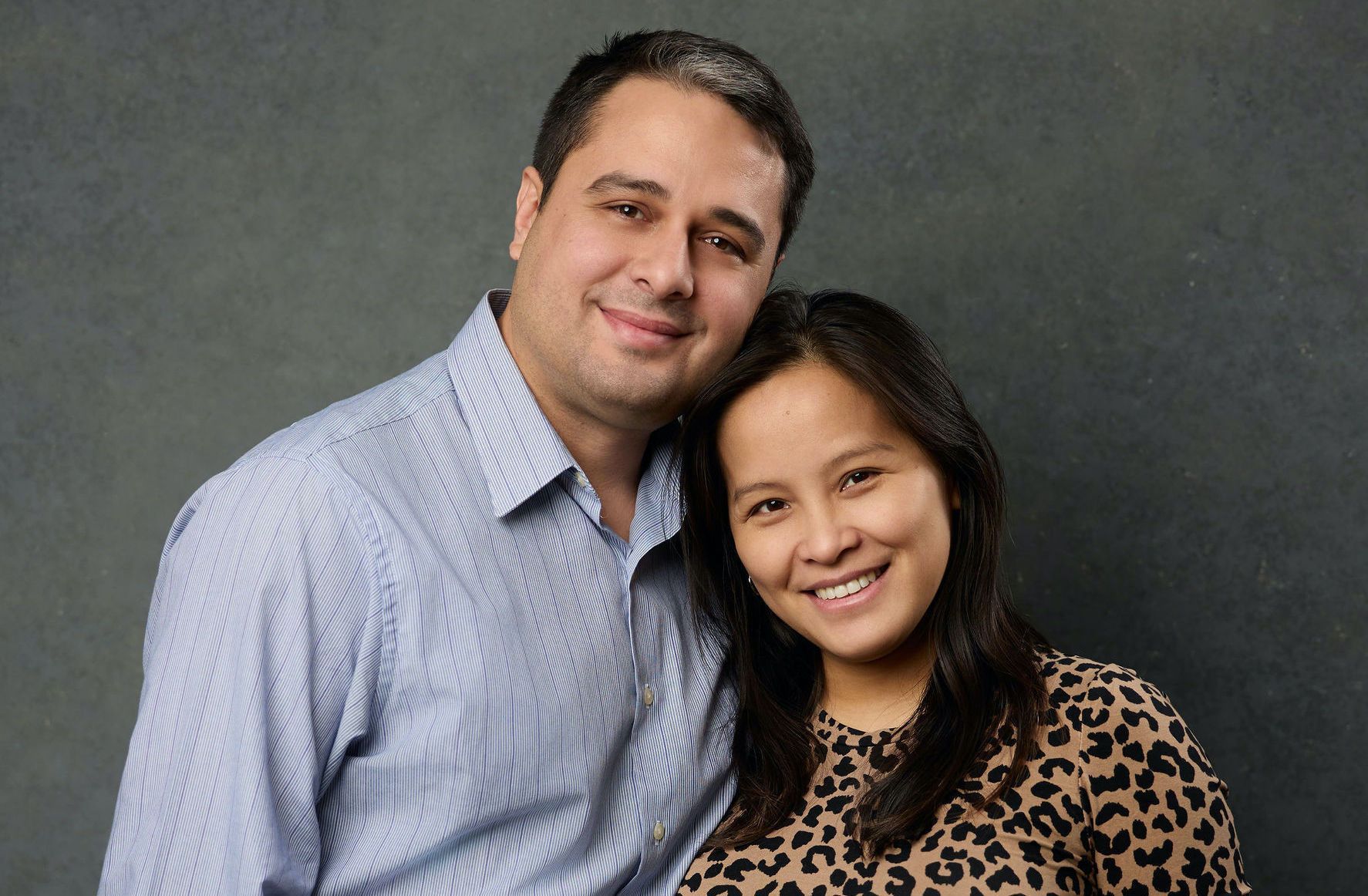Hướng dẫn nhập cư cho vợ/chồng hoặc hôn phu của công dân Hoa Kỳ (Vietnamese)

Hướng dẫn này dành cho Công dân Hoa Kỳ đang cố gắng hiểu đầy đủ (1) các lựa chọn kết hôn là gì và (2) các lựa chọn/quy trình nhập cư. Nếu bạn có Vợ/chồng hoặc Hôn phu là người Việt Nam, Hướng dẫn này sẽ bao gồm các chủ đề và câu hỏi phổ biến nhất.
Đầu tiên, hai lựa chọn thị thực nhập cư là gì:
- Thị thực vợ/chồng CR-1/IR-1 (Người nhập cư) và
- Visa hôn phu (người nhập cư) K-1
Thứ hai, làm thế nào để kết hôn ở Việt Nam?
Đại sứ quán Hoa Kỳ hướng dẫn việc kết hôn tại Việt Nam như sau:
https://vn.usembassy.gov/u-s-citizen-services/local-resources-of-u-s-citizens/marriage/
Tuy nhiên, Hôn nhân ảo ở Utah cũng có thể là một khả năng khả thi:
Yêu cầu kết hôn theo pháp luật Việt Nam
Điều kiện chung để một công dân Hoa Kỳ kết hôn với một công dân Việt Nam tại Việt Nam như sau:
- Đơn đăng ký kết hôn: Mẫu này phải được lấy từ Văn phòng Tư pháp Quận Việt Nam tại Ủy ban Nhân dân Quận
- Ảnh hộ chiếu: Một tấm ảnh cỡ 3×4 cm của mỗi người đính kèm trong đơn đăng ký kết hôn.
- Hộ chiếu của công dân Hoa Kỳ: Một bản sao có công chứng, có thể lấy tại cơ quan công chứng Việt Nam.
- Bằng chứng về địa chỉ: Nếu công dân Hoa Kỳ cư trú tại Việt Nam, tòa nhà chung cư nơi công dân Hoa Kỳ cư trú phải yêu cầu cảnh sát cung cấp bằng chứng cư trú.
- Giấy chứng nhận sức khỏe tâm thần
- Bản khai tình trạng độc thân
- Thư của Văn phòng Thống kê Quan trọng Hoa Kỳ
Giấy chứng nhận sức khỏe tâm thần để kết hôn ở Việt Nam
Văn bản xác nhận của tổ chức y tế Việt Nam hoặc nước ngoài có thẩm quyền cấp trong thời hạn 6 tháng kể từ ngày nộp hồ sơ kết hôn.
Giấy chứng nhận phải chứng nhận rằng người nộp đơn không có tình trạng sức khỏe tâm thần khiến người đó không có khả năng đưa ra quyết định độc lập.
Vui lòng liên hệ với Văn phòng Tư pháp Quận tại địa phương của bạn để được hướng dẫn cụ thể.
Bản khai tình trạng độc thân để kết hôn ở Việt Nam
Người nộp đơn có thể yêu cầu bản khai tình trạng độc thân từ cơ quan đăng ký dân sự ở tiểu bang nơi họ cư trú hoặc hoàn thành bản khai này tại Đại sứ quán/Lãnh sự quán Hoa Kỳ tại Việt Nam.
Bản khai phải được ký trong vòng sáu tháng kể từ ngày nộp đơn xin cấp giấy chứng nhận kết hôn.
Những người nộp đơn đã kết hôn trước đây phải xuất trình bản sao có chứng thực của quyết định ly hôn hoặc giấy chứng tử của (những) người phối ngẫu trước đó.
Phí công chứng tại Đại sứ quán/Lãnh sự quán Hoa Kỳ là 50 USD/bản.
Các cuộc hẹn tại Đại sứ quán hoặc Lãnh sự quán có thể được thực hiện tại đây: https://evisaforms.state.gov/Instructions/ACSSchedulingSystem.asp
Sau khi được công chứng tại Đại sứ quán/Lãnh sự quán Hoa Kỳ tại Việt Nam, bạn phải chứng thực chữ ký được công chứng tại:
Cục Lãnh sự Việt Nam
40 Trần Phú
Quận Ba Đình
Hà Nội
hoặc
Văn phòng quan hệ đối ngoại
184 bis đường Pasteur
Quận 1
Thành phố Hồ Chí Minh
Thư của văn phòng thống kê quan trọng Hoa Kỳ về hôn nhân ở Việt Nam
Thư này do chính quyền tiểu bang hoặc địa phương nơi cư trú của người nộp đơn tại Hoa Kỳ cấp, phải xác nhận rằng không có hồ sơ nào về giấy phép kết hôn hoặc giấy chứng nhận kết hôn của người nộp đơn tồn tại.
Thời gian tìm kiếm phải bắt đầu từ Ngày sinh thứ 18 của Công dân Hoa Kỳ ĐẾN Hiện tại.
LƯU Ý: Yêu cầu này thay đổi tùy theo từng địa phương ở Việt Nam và có thể không bắt buộc. Vì vậy, hãy xác nhận yêu cầu này TRƯỚC TIÊN tại Văn phòng Tư pháp cấp quận của Việt Nam tại địa phương.
Thông tin liên hệ của mọi Văn phòng Thống kê Quan trọng của Hoa Kỳ có thể tìm thấy tại đây: https://www.cdc.gov/nchs/w2w/index.htm
Những tài liệu nào sẽ được yêu cầu cho mỗi quy trình (Hôn phu hoặc Vợ chồng)?
Chứng minh mối quan hệ:
Nhấp vào đây để xem hướng dẫn thêm về bằng chứng mối quan hệ trong Đơn xin hôn thê I-129F: https://www.fickeymartinezlaw.com/immigration/k-1-fiance-visa/i-129f-fiance-visa-how-to-prove- mối quan hệ của bạn với uscis/
Nhấp vào đây để xem hướng dẫn thêm về bằng chứng mối quan hệ giữa Đơn thỉnh nguyện vợ chồng I-130: https://www.fickeymartinezlaw.com/immigration/ adjustment-of-status/joint-bona-fide-documents-how-to-start-meeting- the-uscis-i-130-bằng chứng-yêu cầu cho một cuộc hôn nhân/
Chứng minh sự ổn định tài chính:
Tóm lại, Chính phủ Hoa Kỳ cần xem xét lại thu nhập của 3 năm qua và xác nhận thu nhập trước đây và hiện tại đều vượt quá Hướng dẫn về Mức Nghèo của Liên bang (liên kết đến hướng dẫn có tại đây: https://www.uscis.gov/i -864p ). Thông thường Chính phủ sẽ yêu cầu:
- Bản ghi tờ khai thuế của IRS trong 3 năm qua (Có thể tìm thấy hướng dẫn tại đây: /immigration/how-to-request-your-irs-transcript-helpful-guide-to-acquire-this-commonly-requested-immigration-supporting-document/ )
- Mẫu khai thuế 1040 trong 3 năm qua
- W-2 và/hoặc 1099 cho năm gần đây nhất
- 12 tháng Phiếu lương hoặc bằng chứng thu nhập
Vì hoàn cảnh thu nhập của mọi người có thể khác nhau nên các liên kết sau đây sẽ đi sâu hơn vào các tài liệu tài chính cần thiết:
Thu nhập từ cổ phiếu và cổ tức
Đại sứ quán muốn thấy gì:
Lãnh sự quán Hoa Kỳ tại Thành phố Hồ Chí Minh cung cấp Danh sách kiểm tra này về các hạng mục bắt buộc phải cung cấp:
Tôi có thể phỏng vấn xin Visa tại Hà Nội, Việt Nam không?
Không, thị thực nhập cư vào Hoa Kỳ được xử lý cho công dân và người cư trú tại Việt Nam tại Lãnh sự quán Hoa Kỳ tại Thành phố Hồ Chí Minh.
Hướng dẫn phỏng vấn lãnh sự tại thành phố Hồ Chí Minh là gì?
Thị thực nhập cư vào Hoa Kỳ được xử lý cho công dân và người cư trú tại Việt Nam tại Lãnh sự quán Hoa Kỳ tại Thành phố Hồ Chí Minh.
Link hướng dẫn:
Làm thế nào để có được giấy khai sinh Việt Nam?
Thông tin chi tiết có thể được tìm thấy ở đây:
Làm thế nào để có được Chứng chỉ Cảnh sát Việt Nam?
“Kiểm tra lý lịch tư pháp số 2” (Phiêu Lý Lịch Tư Pháp Số 2) phải được thực hiện tại trụ sở Sở Tư pháp cấp huyện nơi người nộp đơn hiện đang cư trú hoặc tại nơi ở chính thức của người nộp đơn. Việc kiểm tra hồ sơ mất khoảng 10 ngày làm việc để hoàn thành. Người nộp đơn phải nộp đơn trực tiếp và không thể ủy quyền cho người khác nộp đơn thay mặt mình.
Người nộp đơn phải chuẩn bị xuất trình hai (2) bộ tài liệu sau vào thời điểm yêu cầu:
- Mẫu đơn đã điền đầy đủ (Mẫu 03/TT-LLTP.) Vui lòng đánh dấu vào ô Kiểm tra lý lịch tư pháp #2;
- Chứng minh nhân dân hoặc hộ chiếu của người nộp đơn;
- Bằng chứng về nơi cư trú và thời gian cư trú tại Việt Nam của người nộp đơn như sổ hộ khẩu (Hồ Khẩu), sổ đăng ký tạm trú, thẻ thường trú hoặc giấy chứng nhận cư trú của Ủy ban nhân dân địa phương nơi người nộp đơn cư trú.
Tôi đã nộp hồ sơ rồi và việc này mất nhiều thời gian hơn dự kiến. Làm cách nào để xác minh rằng tôi đang trong thời gian xử lý thông thường?
Tại USCIS, Thời gian xử lý có thể được tìm thấy tại:
Hướng dẫn Y tế dành cho Người nhập cư:
Bạn có thể tìm thấy Hướng dẫn Y tế cập nhật dành cho Người nhập cư tại đây:
Visa vợ chồng CR-1/IR-1 (Người nhập cư)
Thị thực nhập cư vợ chồng IR-1 / CR-1 là thị thực cho phép vợ/chồng Việt Nam nhập cư vào Hoa Kỳ.
Quá trình bao gồm 2 giai đoạn chính:
- Trong giai đoạn đầu tiên, hồ sơ sẽ được USCIS xem xét và phê duyệt.
- Sau khi được phê duyệt, hồ sơ sẽ chuyển sang giai đoạn 2, được chuyển đến NVC và sau đó đến Đại sứ quán tại Thành phố Hồ Chí Minh, Việt Nam.
Để biết tổng quan chi tiết hơn về loại hồ sơ này và những gì nó đòi hỏi, vui lòng tham khảo các bước dưới đây:
- Phần 1 – Đơn yêu cầu công nhận mối quan hệ – Gửi I-130 bằng điện tử với USCIS
- Phần 2 – Xử lý USCIS – I-130 Đang chờ Nhân viên USCIS xem xét hồ sơ và các tài liệu hỗ trợ
- Phần 3 – Xử lý NVC – Đã thanh toán phí thị thực, điền DS-260 và tải lên các tài liệu hỗ trợ.
- Phần 4 – Phỏng vấn Lãnh sự quán – NVC cung cấp ngày và giờ phỏng vấn tại Thành phố Hồ Chí Minh, Tài khoản Đại sứ quán/Lãnh sự quán sẽ được đăng ký, Giấy khám sức khỏe của Người nhập cư được thực hiện, Tài liệu được chuẩn bị và Cuộc phỏng vấn đã tham dự.
- Phần 5 – Phí in thẻ xanh – Nộp phí định cư trước khi sang Mỹ
- Phần 6 – Đến Mỹ – Bay sang Mỹ, Nộp đơn/Nhận Thẻ An sinh Xã hội Hoa Kỳ và Nhận Thẻ Xanh qua đường bưu điện trong vòng 3-4 tháng sau khi nhập cảnh.
Chi phí của chính phủ: $1305
Thời gian xử lý trung bình (Ước tính năm 2024): 13-18 tháng (với phần lớn thời gian xử lý dành cho Đơn I-130)
Khi cặp đôi đã kết hôn chưa đầy 2 năm tại thời điểm phỏng vấn thì Visa CR-1 sẽ được cấp, điều kiện nơi cư trú phải có Thẻ xanh 2 năm và sau đó yêu cầu I-751. Nếu cuộc hôn nhân kéo dài hơn 2 năm tính đến thời điểm phỏng vấn thì Visa IR-1 sẽ được cấp và Thẻ xanh tiếp theo sẽ có hiệu lực trong 10 năm.
Visa hôn phu K-1 (Người nhập cư)
Lưu ý quan trọng đầu tiên: Quy trình cấp thị thực hôn phu K1 thường chậm hơn gấp 2 lần và tốn kém gấp 2 lần so với Thị thực nhập cư vợ chồng CR-1/IR-1.
Visa hôn thê có 3 bước:
- Bước 1: Đơn I-129F nộp cho USCIS
- Bước 2: Đơn xin thị thực hôn phu DS-160 K-1 nộp cho Đại sứ quán Hoa Kỳ tại Thành phố Hồ Chí Minh, Việt Nam, cho phép hôn thê nhập cảnh vào Hoa Kỳ
- Bước 3: I-485 Điều chỉnh tình trạng nộp đơn với USCIS để nhận Thẻ xanh
Bước 1 của quy trình về cơ bản là công nhận mối quan hệ và xác nhận tính đủ điều kiện. Bước 2 kiểm tra hôn phu về mối quan hệ và xác nhận lại tính đủ điều kiện. Bước 3 xác nhận việc kết hôn sau khi được cấp Visa K1 và xác minh rằng cuộc hôn nhân là vì tình yêu và để bắt đầu cuộc sống chung. Sau khi được USCIS xác nhận, K-1 sẽ điều chỉnh trạng thái thành Thường trú nhân hợp pháp (còn gọi là Thẻ xanh).
Các yêu cầu để nộp hồ sơ I-129F là gì?
- Người nộp đơn phải là công dân Hoa Kỳ
- Mối quan hệ là chân thật
- Công dân Mỹ và người Việt đã gặp nhau trong vòng 2 năm qua
- Công dân Mỹ và Việt Nam dự định kết hôn với Visa K-1 trong vòng 90 ngày sau khi nhập cảnh
- Công dân Hoa Kỳ và người Việt Nam được “tự do kết hôn” về mặt pháp lý, nghĩa là không có thủ tục ly hôn đang chờ xử lý.
- Công dân Hoa Kỳ có thu nhập ổn định để hỗ trợ hôn phu Việt Nam và thu nhập đó vượt qua Hướng dẫn về Mức Nghèo của Liên bang như nêu trong USCIS I-864P
Cách chuẩn bị Thư dự định cho quá trình này:
Dưới đây là mẫu mà văn phòng chúng tôi đã tạo để hỗ trợ:
I-129F mất bao lâu để xử lý?
Bạn có thể tìm thấy thời gian xử lý đơn I-129F tại đây, chỉ cần chọn trung tâm dịch vụ nơi nộp đơn (thông tin đó thường được tìm thấy trên Thông báo nhận của người nộp đơn): https://www.fickeymartinezlaw.com/immigration/how-do-i-check-uscis-processing-times
I-485 mất bao lâu để xử lý?
Liên kết trên có thể hỗ trợ tìm thời gian xử lý hiện tại, điểm khác biệt là bạn sẽ chọn Văn phòng thực địa USCIS tại địa phương thay vì Trung tâm dịch vụ USCIS. Việc nộp đơn I-485 (dựa trên kết hôn) thường yêu cầu một cuộc phỏng vấn tại văn phòng địa phương.
Nếu bạn cần hỗ trợ về quy trình cấp Thị thực cho Vợ/chồng hoặc Hôn phu, vui lòng liên hệ với văn phòng của chúng tôi để thiết lập cuộc tư vấn với Luật sư Di trú của chúng tôi.
Tuyên bố miễn trừ trách nhiệm: Blog này được luật sư hoặc nhà xuất bản của công ty luật cung cấp chỉ nhằm mục đích giáo dục cũng như cung cấp cho bạn thông tin chung và hiểu biết chung về luật chứ không cung cấp tư vấn pháp lý cụ thể. Khi sử dụng trang blog này, bạn hiểu rằng không có mối quan hệ luật sư-khách hàng giữa bạn và nhà xuất bản Blog/Trang web. Không nên sử dụng Blog này để thay thế cho lời khuyên pháp lý có thẩm quyền từ một luật sư chuyên nghiệp được cấp phép ở tiểu bang của bạn.












